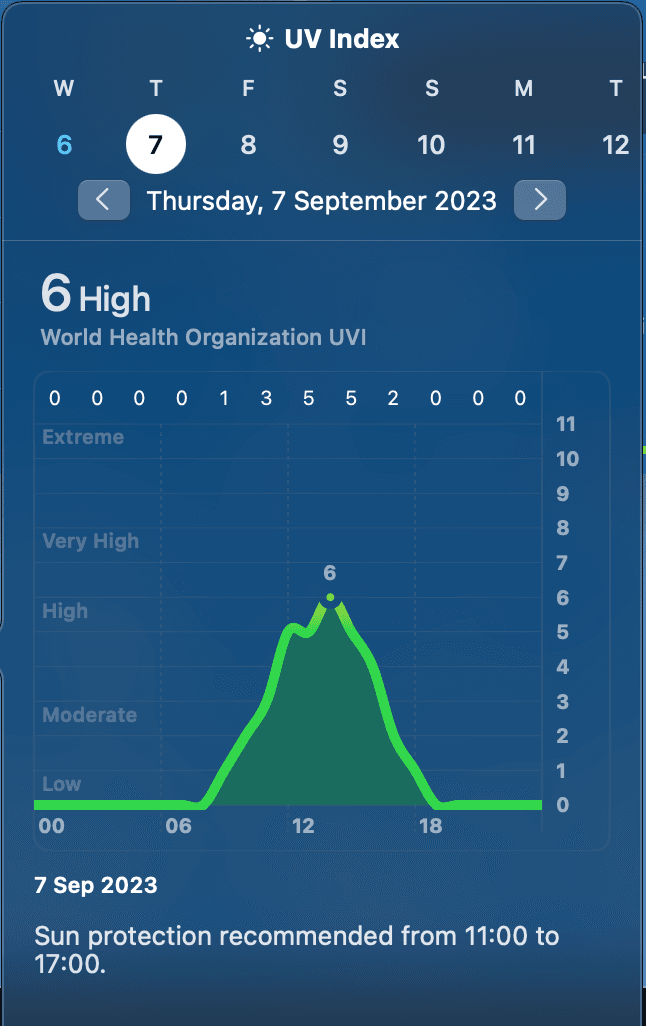- Published on
A Dip In The Complexities Of the UV-index
- Authors

- Name
- Tim Janssen
- @realTimJanssen
A Dip Into The Complexities of UV-Index
I was looking at the UV-index of the next couple of days. They are quite hot and sunny for this time a year where I live. But most importantly: there is not a cloud to be seen. Then I noticed something strange. Sometimes the UV-index has a small dip right before its apex.

Why is this? The sky has no clouds to obscure the sun. This pattern happens multiple times on different days, sometimes it does not.
So I decided to ask this question to ChatGPT, so I could at least get some terminology to start my chasing my curiosity.
Answer:
"The small dip in the UV index right before its apex on a completely clear day can be attributed to a phenomenon known as the 'Brewer-Dobson circulation.' This atmospheric circulation pattern plays a role in the distribution of ozone in the Earth's stratosphere and can influence the UV radiation reaching the Earth's surface."
So apparently there is a circulation pattern that jostles the air around in the atmosphere, so there are different concentrations of ozone at different points in time. Ozone plays a role in absorbing UV. Therefore if there is a higher concentration of UV at about 12:00, more UV gets absorbed, resulting in a lower UV-index.

So this triggered a followup question. Why does it happen around the same time every day? There are two assumptions here, because I do not know if it does indeed happen every day, and if so if it happens around the same time.
So both assumptions are wrong, because it does not happen every single day. And sometimes this flat pattern is observable.

So, this effect is not really tied to specific time of day. But instead it is tied to seasonal changes in the atmosphere, temperature changes, wind, and a lot of other stuff.